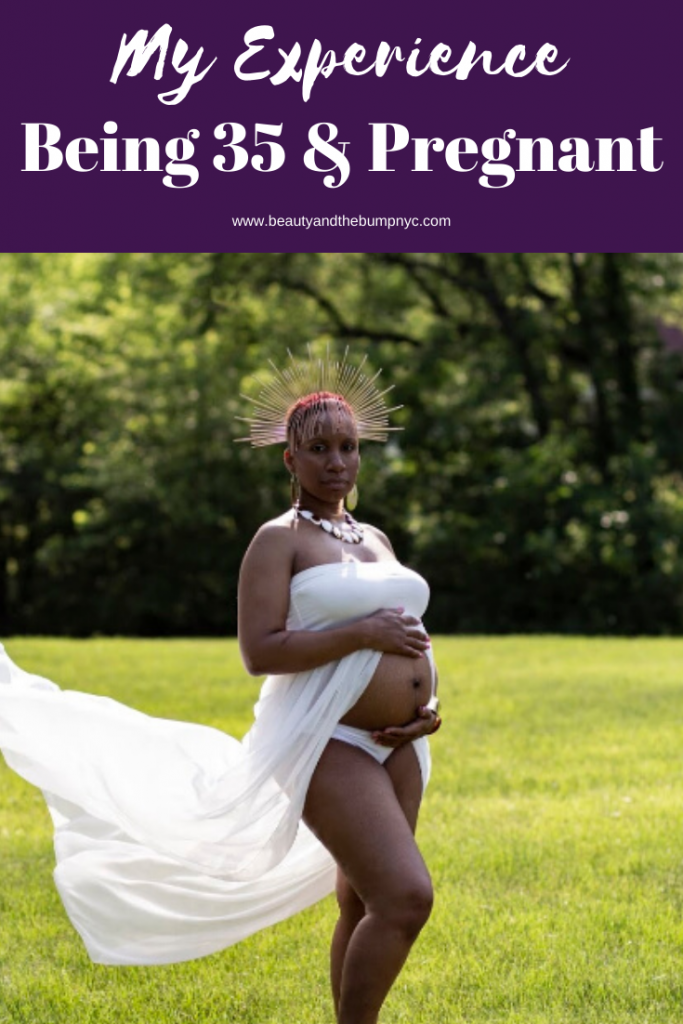Remember in my announcement post I shared that I tried my best to become pregnant before I hit 35 years old? Even though I did get pregnant at 34, I am giving birth when I am 35 years of age; therefore, I fall into this ridiculous medical category of being of “advanced maternal age.” That said, there is a difference between being younger and pregnant versus being older and pregnant. From how our bodies change and deal with those changes to the number of doctor appointments for which we have to alter our schedules, I’ve come to learn that there is a difference in being pregnant at 25 versus 35. I am sharing my experience with being 35 and pregnant.

You Can Find out Baby’s Sex Early
Via a NIPT test, which screened for chromosomal abnormalities, I was able to find out the gender at 12 weeks. My provider used Sema4 for screening which provided the results of the screening along with a video to accompany the results to explain what they meant, and then a cute video to reveal the sex. For non-high-risk pregnancies, women usually find out the sex after 16 weeks.
More Doctor’s Appointments
If you’re giving birth when you’re 35 or older, you will be at the doctor pretty often due to your “advanced maternal age”. Don’t hate me, that’s a medical term. Trust me, I cringed every single time it was said.
Any pregnancy that occurs during or after age 35 will be deemed a geriatric pregnancy. Women expecting at this age can experience high-irks pregnancies due to pre-eclampsia, gestational diabetes, and/or lead to chromosomal abnormalities with the baby.
I am/was seeing a Maternal-Fetal Specialist every two weeks PLUS my OB/GYN monthly. I saw my MFM bi-weekly to check my cervix length and fetal growth, which meant I saw the baby more. It is cool seeing her growth over time.
You will Get to See the Baby More
In “normal” pregnancy situations you are seeing your doctor monthly and you may only get to have a sonogram during the following situations depending on the number of sonograms covered by your insurance:
- First Trimester – This is done to date the pregnancy, check the placenta and listen to the heartbeat
- Second Trimester – During weeks 16- 20 for the anatomy scan to check that the baby is growing normally, to look at the location of the placenta, and to be sure that there is enough amniotic fluid
- Third Trimester – An ultrasound is done to check the size or position of the baby, the amount of amniotic fluid, or the location of the placenta, and sometimes the length of the cervix.
Since I am going to be 35 at the time of baby #2’s birth, as well as having a short cervix I’ve had sonograms every two weeks since week 16. During these scans, my cervix length is checked as well as the baby’s growth.
Everything Hurts
Aside from a few expected growing pains, my first trimester was a breeze. Then the second and third trimester hit me. The weight of the baby is weighing on my body; therefore, making my knees, back, and hips ache. I can’t sleep for more than three hours without it becoming uncomfortable. I literally feel like an old lady.
RELATED: MAKE THESE LIFESTYLE CHANGES TO PREPARE FOR PREGNANCY
Don’t let medical terminology freak you out because, aside from a few aches, extra appointments and testing, being 35 years old and pregnant isn’t all that bad. Although the many appointments interrupt my schedule I get special care, which allows me to see my baby often. Being able to see baby #2’s growth and progression throughout this pregnancy has been especially comforting after experiencing loss.

